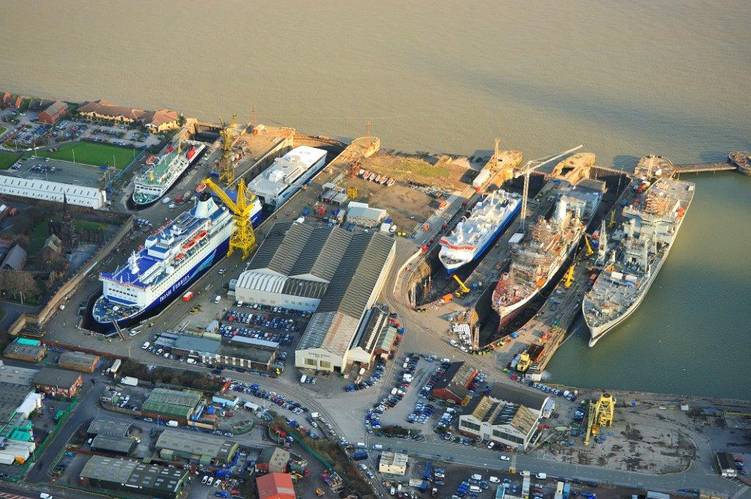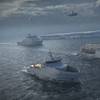Cammell Laird Dazzles Ship for WWI Centenary
Painters from British shipyard and engineering services company Cammell Laird have started work transforming a pilot boat into a camouflage dazzle design to mark the centenary of the First World War, in which the company played a key role.
One of the world's leading contemporary artists Carlos Cruz-Diez has been commissioned to design the dazzle pattern for the Edmund Gardner vessel situated in dry dock near Liverpool’s Albert Dock. The design will remain secret until a special ceremony to unveil the newly dazzled vessel in June. The project has been co-commissioned by Liverpool Biennial, Tate Liverpool and 14-18 NOW WW1 Centenary Art Commission.
Dazzle Ship will be seen during the International Festival for Business in Liverpool and will be accompanied by a display exploring the history of dazzle ships and the role of artists in the First World War.
Cammell Laird CEO John Syvret said, "Cammell Laird is steeped in naval history and played a key role in the First World War. We feel honoured to help commemorate the occasion by 'dazzling' the Edmund Gardner. The project provides a meaningful way for Cammell Laird to reflect on the immense contribution the company made to the country during the war years.
“The newly dazzled Edmund Gardner will create an important and thought provoking public monument for Merseyside and the wider U.K."
During World War One Cammell Laird completed work on nine battleships, 60 cruisers, 100 British and 95 United States destroyers, eight submarines, 123 armed merchant vessels and 107 merchant ships. The Cunard passenger liner Campania and the Isle of Man Steam Packet Co steamer Ben-My-Chee were also converted at Cammell Laird into the first seaplane carriers for the Royal Navy
Dazzle painting was a system for camouflaging ships that was introduced in early 1917, at a time when German submarines were threatening to cut off Britain’s trade and supplies. The idea was not to “hide” the ships, but to paint them in such a way that their appearance was optically distorted, so that it was difficult for a submarine to calculate the course the ship was travelling on, and so know from what angle to attack. The “dazzle” was achieved by painting the ship in contrasting stripes and curves that broke up its shape. Characterised by garish colours and a sharp patchwork design of interlocking shapes, the spectacular ‘dazzle’ style was heavily indebted to Cubism.
Carlos Cruz-Diez is one of the great figures of contemporary art, especially kinetic-optic art. His works can be found in the permanent collections of Museum of Modern Art, New York; Tate Modern, London; Centre Georges Pompidou, Paris; Museum of Fine Arts, Houston; Wallraf-Richartz Museum, Cologne.
In addition to Cammell Laird, Liverpool based organization Weightmans is also supporting Dazzle Ship.
biennial.com


















